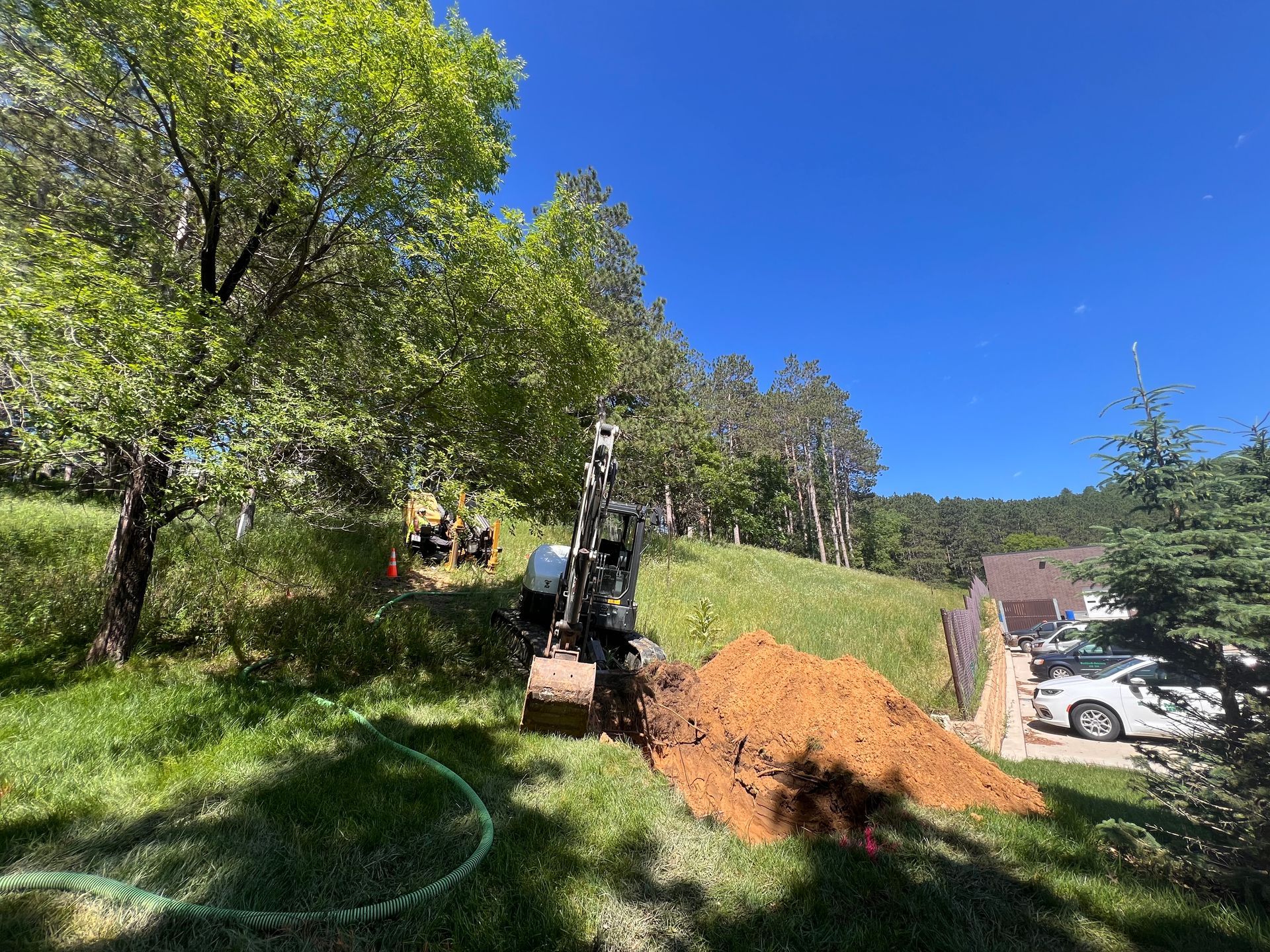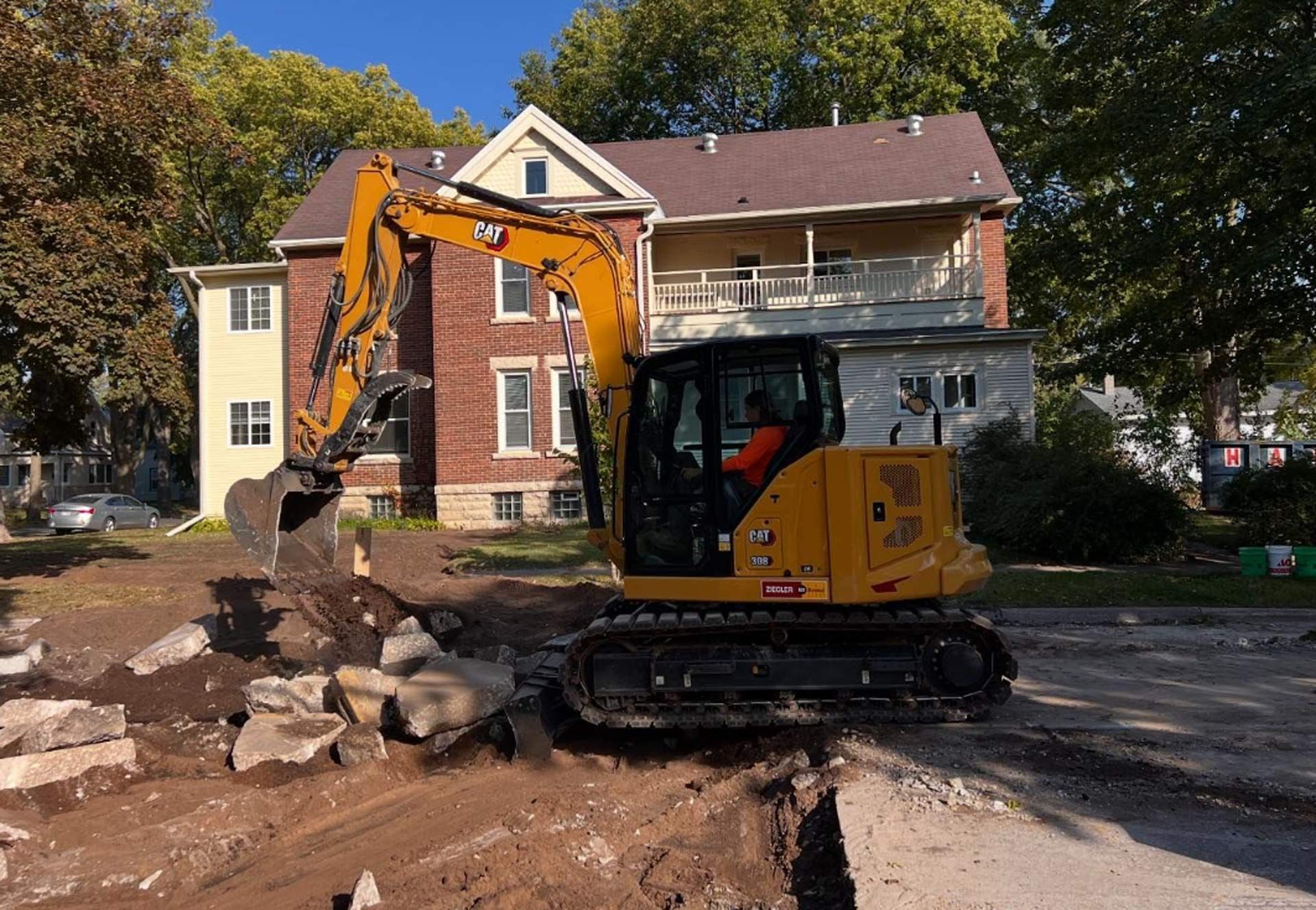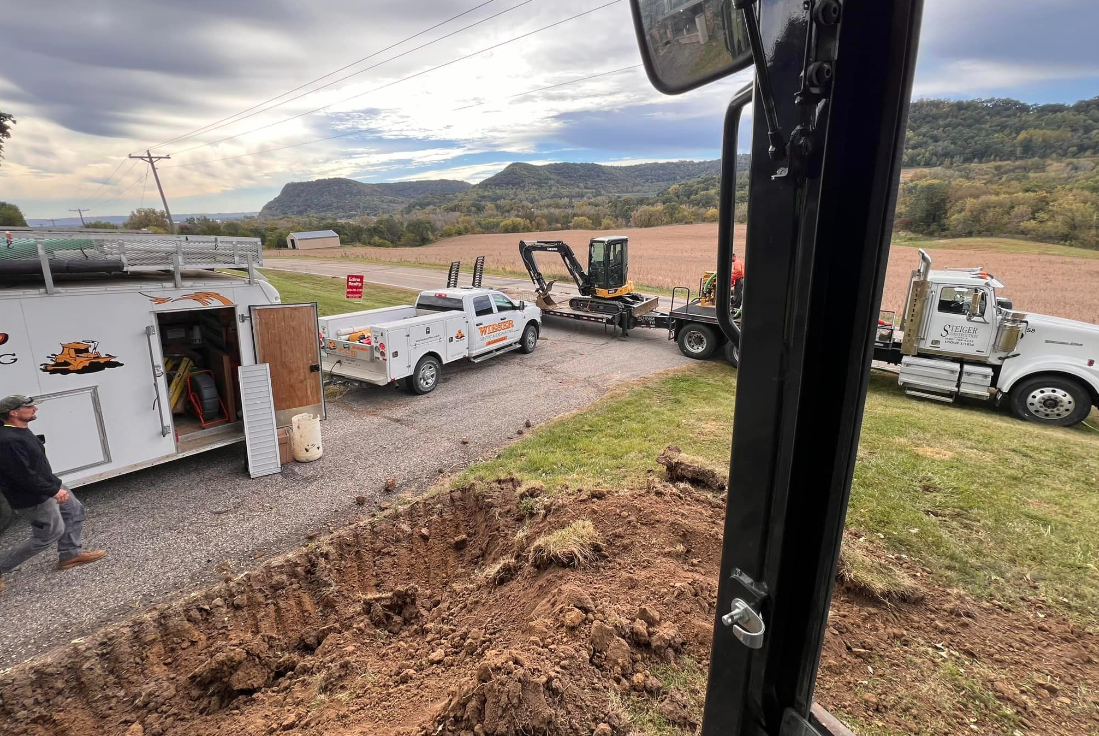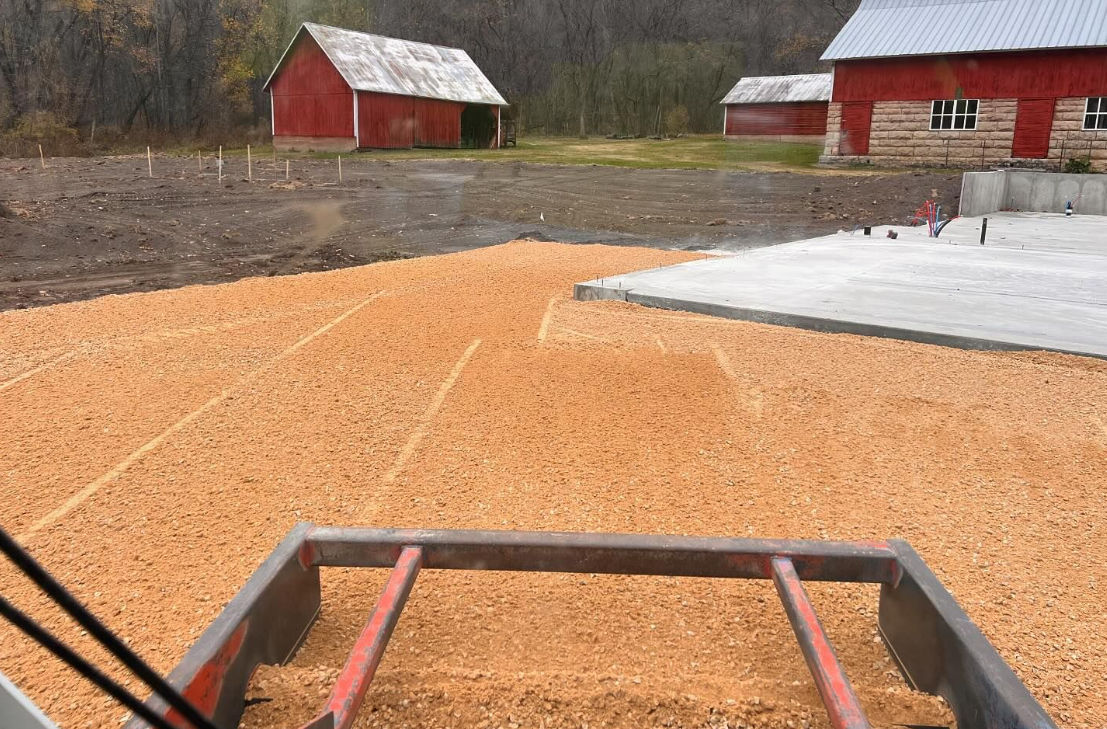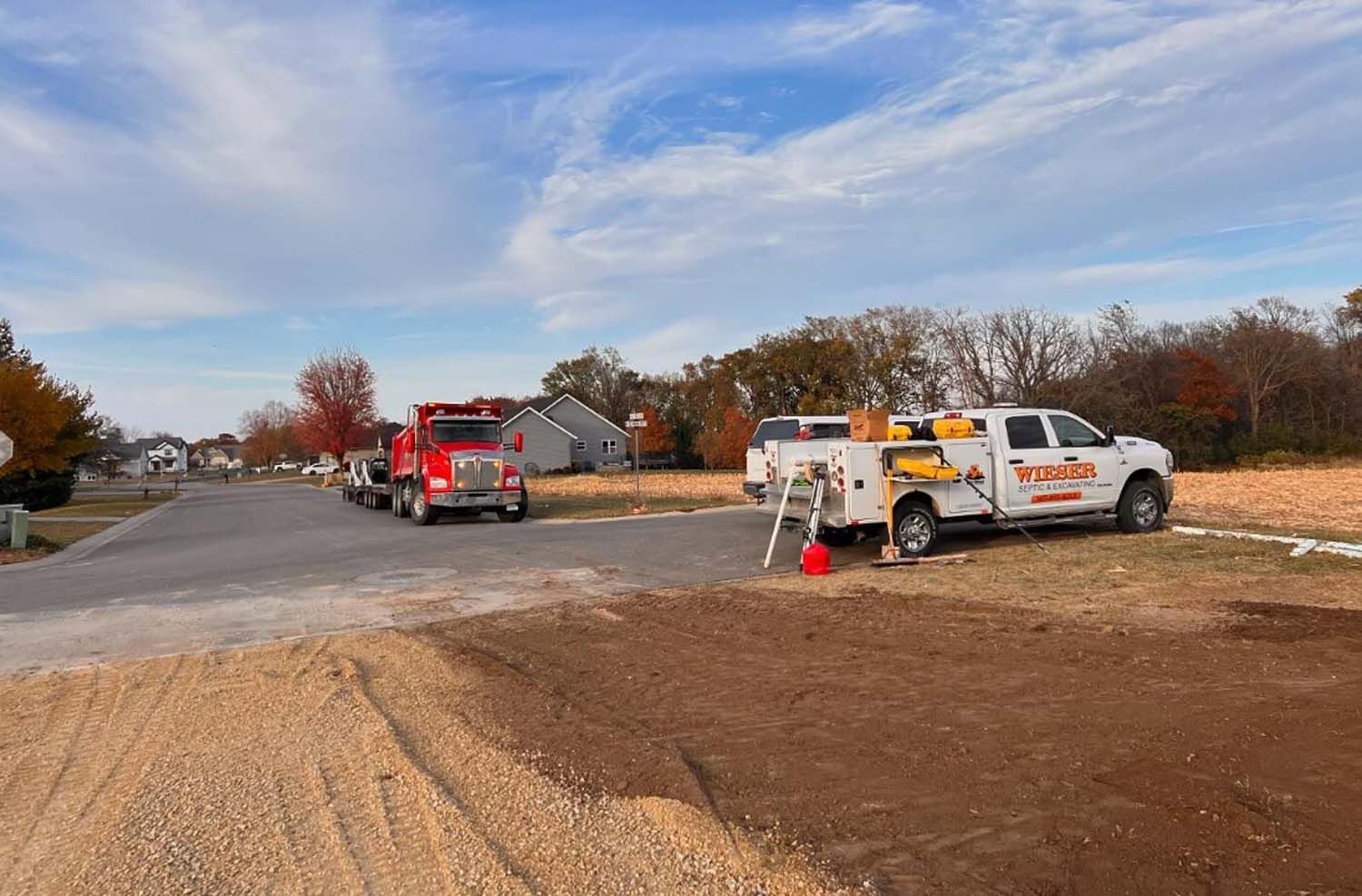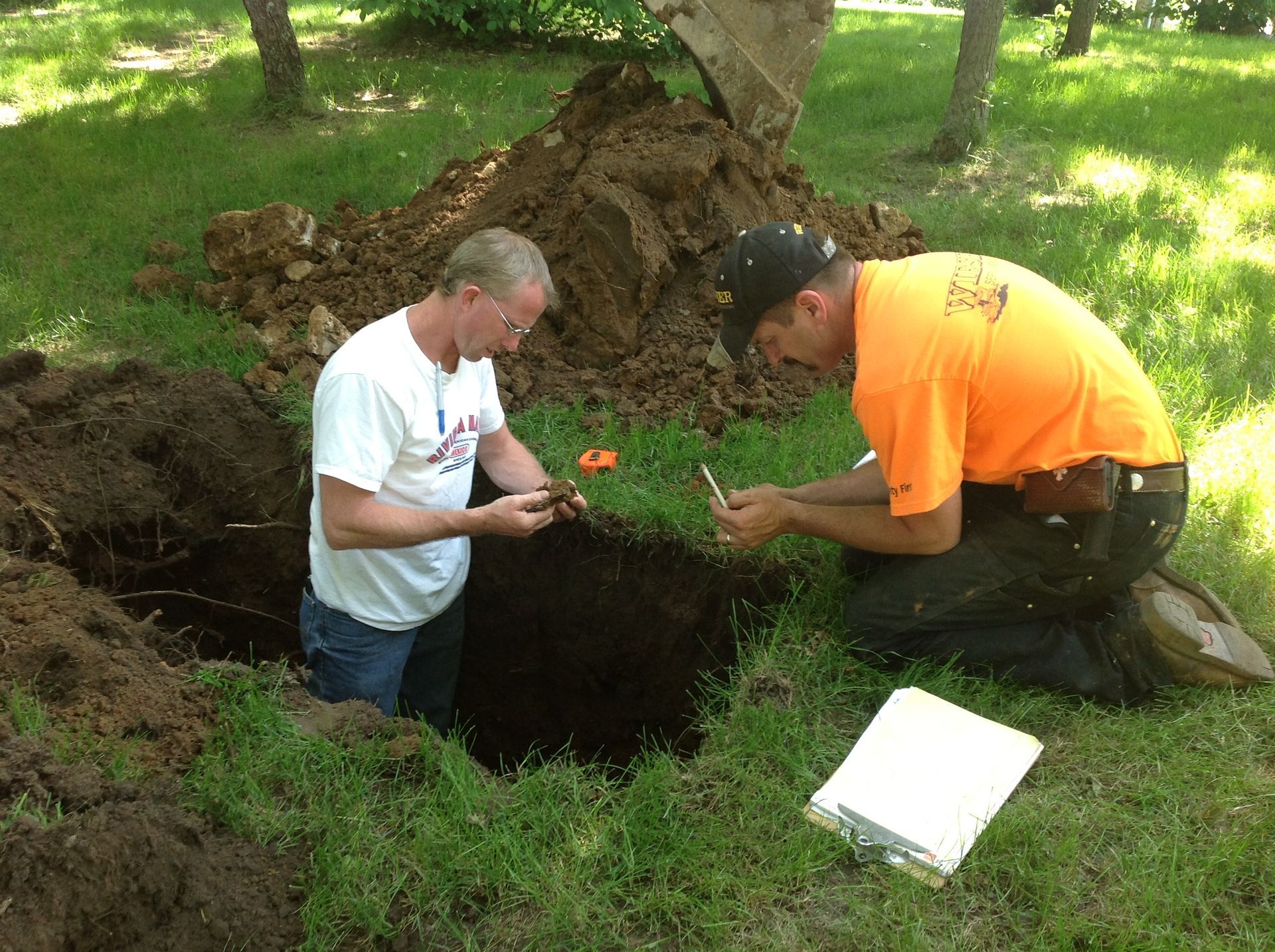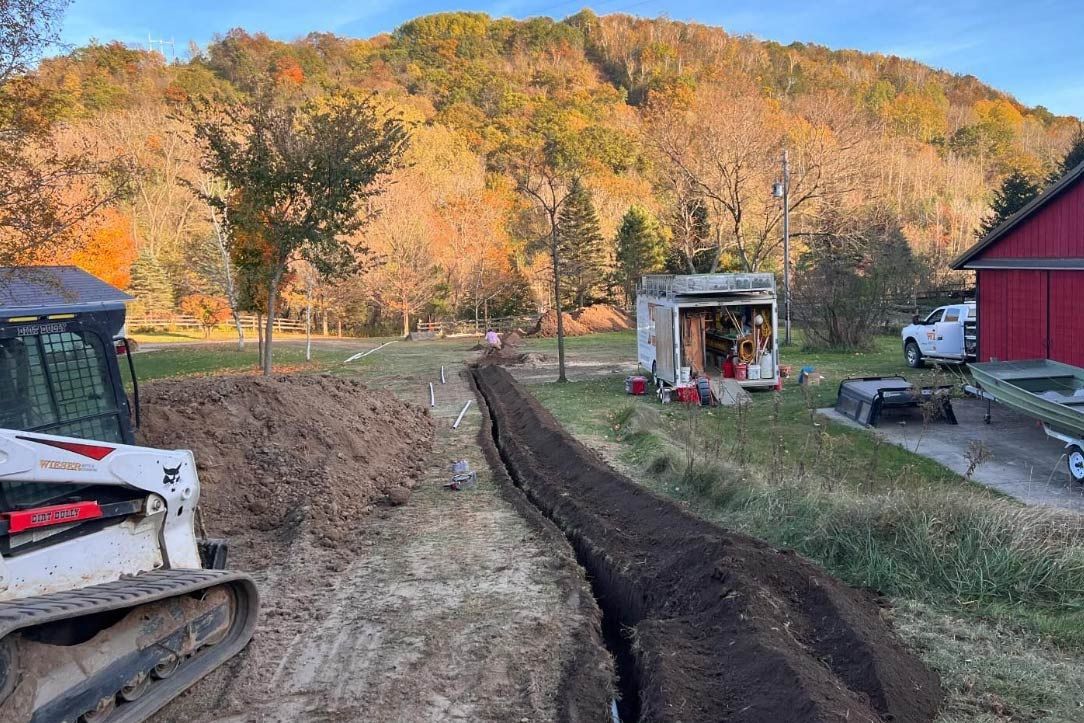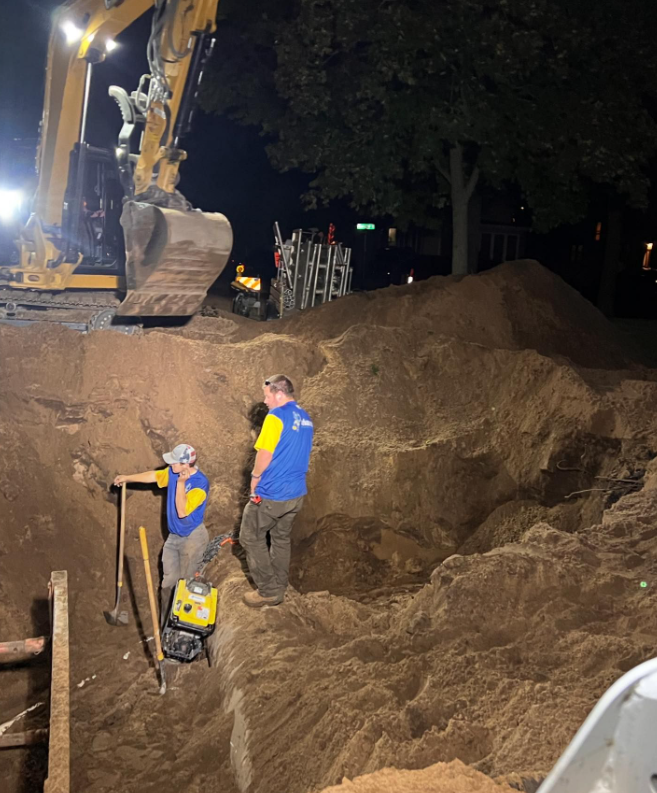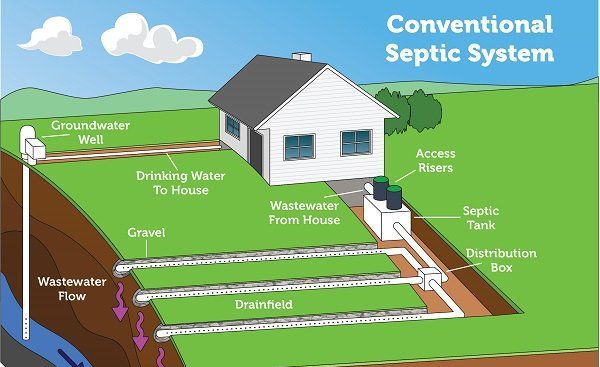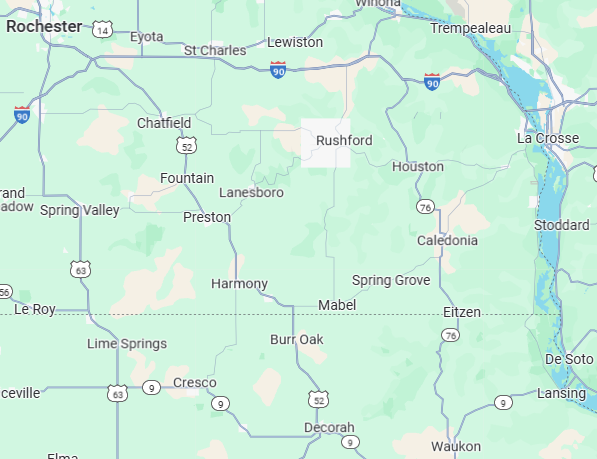Sewage from homes has pathogens such as bacteria and viruses, plus nutrients, solids and cleaning products that can cause human health and environmental problems. "Failure" of a septic system means that wastewater may be allowed to come in contact with people or enter the natural environment before it is harmless.
Common indicators of a failing or failed septic system may include one or more of the following:
- Sewage backup into the house.
- Water or sewage surfacing in the yard or a ditch. Sewage odors indoors or outdoors.
- High levels of nitrates or coliform bacteria in well water tests.
- Alarms sounding/flashing on the system.
- Frozen pipes or soil treatment areas.
- Frequent intestinal disorders.
- Algae blooms and excessive plant growth in nearby ponds or lakes.
- Sewer Compliance Inspection done by a licensed sewer inspector.
Subsurface sewage treatment system (SSTS) compliance inspections are conducted for:
• Newly installed systems — To determine if the design and installation meet current rule requirements, and if the system will protect public health and minimize effects on groundwater. All new Construction or Replacement not designed under 7080.0178 (Other systems) or 7080.0179 (Performance systems) must meet technical standards and criteria. Three feet of vertical separation must be measured in the soil treatment area.
• Existing systems — To determine whether the system is functioning properly to protect public health and groundwater.
Individual sewage-treatment systems (ISTSs) shall be considered in compliance if the provisions in items A to E are satisfied (7080.0060):
A. General:
(1) The system must not be an imminent threat to public health or safety (Failing to Protect Groundwater) ((7080.0020, subp. 19a)). Imminent Threat conditions are:
• sewage discharge to the ground surface;
• sewage discharge to surface water;
• sewage backing up into the dwelling or other establishment; or
• any other situation with the potential to immediately and adversely affect or threaten public health or safety.
(2) The system must not be failing (7080.0020, subp. 16b).
Failing conditions are:
• a seepage pit;
• a drywell;
• a leaching pit;
• any pit or other device that is greater than 30 inches in height and used for sewage treatment or disposal (other pit)
• a tank that obviously leaks below the designed operating depth; or
• any system with less than the required vertical separation (see B below).
(3) The system meets the performance expectations of any applicable monitoring plan required for Other Systems (7080.0178) and Performance Systems (7080.0179).
B. Vertical Separation*
(1) All systems built after March 31, 1996, must have a three-foot vertical separation as measured outside the area of system influence in an area of similar soil, preferably along the same contour;
(2) All systems built before April 1, 1996, that are not in a wellhead protection zone, are not in shoreland, and do not serve a food, beverage or lodging establishment must have at least two feet of vertical separation.
Working Septic vs Compliant System What's the difference?
Homeowners often tell us their septic is working fine. Generally, this means is when they flush or put water down a drain it goes away. A compliant (or non-compliant) system is determined by a licensed septic inspector. They examine the tank after it has been pumped to make sure it is watertight and is not leaking sewage into the ground. The septic inspector will also do a review of the drain field area to determine if the system meets the correct separation distance between the bottom of the drain field media and the periodic water table and to make sure the system is not seeping untreated or undertreated sewage into the ground, backing up or surfacing. They are looking for proper and adequate “treatment” of the septage. A septic system is a mini-sewage treatment plant in your yard. Inspectors will also make sure the tank lid is secured, water watertight, and make sure there are no electrical hazards.
Existing system inspections do not check for system size, horizontal setbacks (i.e., property lines, wells, and buildings), estimated longevity, current usage, or past system abuse. Individuals conducting compliance inspections must be certified by the Minnesota Pollution Control Agency and either operate under an SSTS inspection business license, or act as a qualified employee of a local government.
Failure to properly treat sewage is most commonly the result of: improper design, installation or sizing of one or more components of the system; overuse of water in the household; or lack of proper maintenance.
Improper design, installation, or sizing may be a result of when the system was installed, or the system may have meet code at the time the sewer was installed but no longer meets code due to code changes over the years. More commonly, it means that the wrong system may have been chosen for the site and soil conditions (i.e. high-water table, cesspool, etc.); or the residence has been modified to include more people or use fixtures or appliances that the system was not designed or sized to handle. Examples of this are a bedroom addition to the house or the installation of a garbage disposal.
Over-use of water is a common problem since the typical person (man, woman, or child) uses about 100 gallons of water per person per day. Systems are sized for normal volumes of water use, but abnormally high usage or accidental over-use - leaky fixtures - can easily overload a system. And partially damaged drain field (perhaps from improper maintenance) may not be able to treat even normal water use rates. This situation often occurs when a home of one or two persons is sold to a family of five or six and water use suddenly increases.
Improper maintenance -- the solids that accumulate in the septic tank must be removed regularly. Build-up of excessive scum or sludge in the tank will cause solids to enter the soil treatment area and plug it over time. The University of Minnesota Extension Service recommendation suggests a septic tank should be cleaned (pumped) through the manhole every one to three years to remove all of the solids. The frequency of cleaning depends on several factors including the number of people in the home, the size of the tank and garbage disposal usage. The removal of all solids requires flushing and back flushing of the tank several times
By following some simple home management and maintenance practices, these failures can be eliminated.
This article is for informational purposes only. Inspired by the University of Minnesota.
